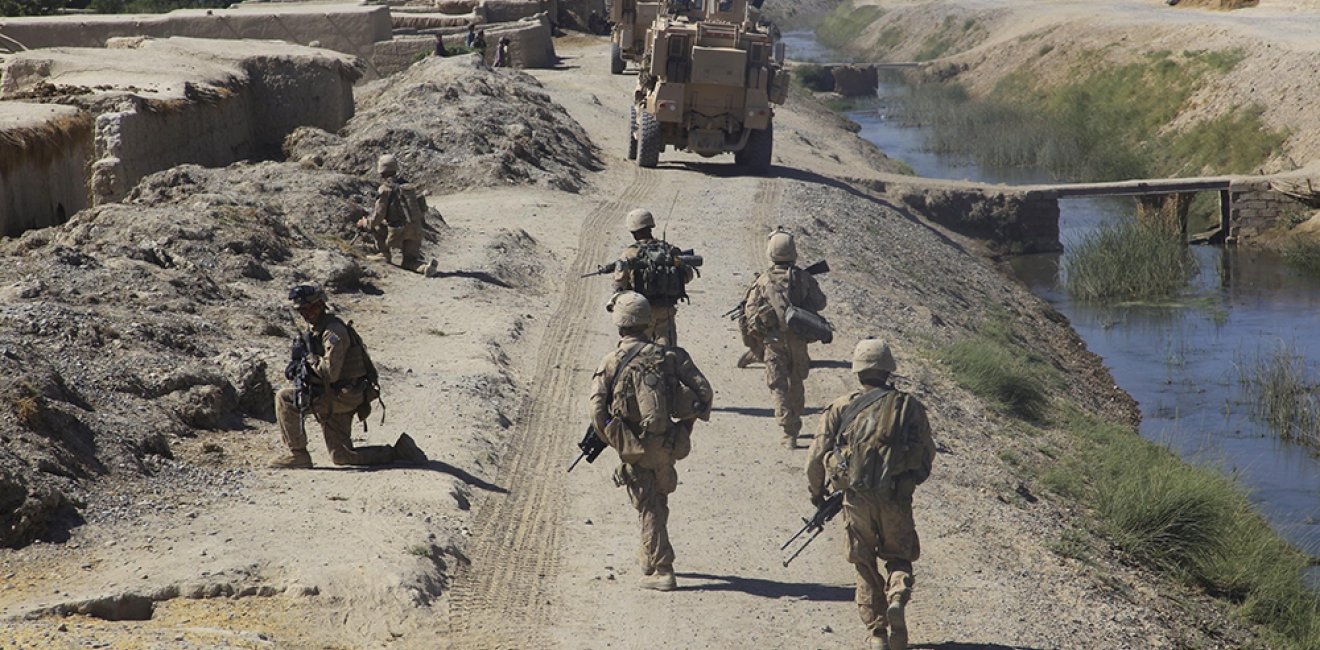
A blog of the Indo-Pacific Program
In early December, Pakistani officials revealed that U.S. President Donald Trump had sent a letter to Pakistani Prime Minister Imran Khan asking Islamabad to help Washington launch a peace process to end the war in Afghanistan.
This correspondence highlights an inconvenient truth for harsh critics of U.S.-Pakistan relations: For all the bluster and tough talk from the Trump administration about taking a harder line on Islamabad, the U.S. government can’t afford to antagonize the Pakistanis in a big way. And that’s because Washington needs Islamabad’s help in Afghanistan.
Until relatively recently, U.S. policy in Afghanistan was to put enough battlefield pressure on the Taliban that they would feel compelled to stop fighting and start talking. However, over the last year, U.S. officials have increasingly come around to the reality that they can only cause so much damage on the battlefield. Given that more than 100,000 U.S. soldiers on the ground at the height of the troop surge couldn’t turn the tide of the war, the 15,000 that remain there today certainly aren’t up for the tasks. U.S. thinking has also been shaped by two key events this year. One was the Taliban’s decision to observe a brief truce during the Eid holiday last June—an indication that the insurgents are willing to support peace, even if only for a few days. The other was the Afghan government’s decision, for the first time, to support direct talks between the Americans and the Taliban. For the insurgents, direct talks with U.S. officials have always been a key condition for launching a reconciliation process.
Accordingly, U.S. policy has now turned to off-battlefield options—and specifically to launching a peace process. And it presents a useful opportunity for a U.S.-Pakistan relationship that has floundered during the Trump administration.
Soon after Khan, who has long supported the idea of peace talks with the Taliban—and to the concern of some observers, has also expressed his full-throated support for the insurgency itself—took office, I spelled out this opportunity in detail in an essay for the Pakistani newspaper Dawn:
“For the US, relations with Pakistan are always seen through the lens of Afghanistan. One reason the US government hasn’t walked away from Islamabad despite all the tensions and frustrations of recent years is that it desperately wants Pakistan to help it pursue its goals in Afghanistan.
From Washington’s perspective, Pakistan hasn’t been terribly helpful, mainly because it has not addressed America's concerns about Afghan insurgents allegedly based in Pakistan. And for years, American troops have tried but failed to tame the militants that Washington accuses Pakistan of harbouring.
But now, a dramatic shift in US policy is underway. After nearly 17 years, US officials are finally realising that the war cannot be won militarily, and that seeking a negotiated outcome is the only viable Plan B.
America’s new Plan B for Afghanistan has always been Pakistan’s Plan A — or at least Islamabad has stated as much publicly. Until now, the two countries’ plans had never been in alignment.”
How exactly Washington wants Islamabad to help in this process is unclear, though the basic ask of Pakistan is to convince the Taliban that now is the time to formally commit to peace talks to end the war.
While the opportunity that Afghan reconciliation presents to U.S.-Pakistan relations is considerable, so are the challenges. Bilateral mistrust and ill-will remains rife, and particularly amid periodic hectoring and bullying language toward Pakistan by Trump, which he expressed most recently several weeks ago in an interview with Fox News.
While the opportunity that Afghan reconciliation presents to U.S.-Pakistan relations is considerable, so are the challenges.
More broadly, the U.S. government is now pursuing talks with its foot on the accelerator, amid reports that Trump is increasingly impatient staying in Afghanistan. There’s a strong likelihood that if Washington—led by Zalmay Khalilzad, the newly appointed envoy for Afghan reconciliation efforts—doesn’t get a deal in the coming months, Trump could decide to unilaterally withdraw from Afghanistan. Washington hopes to have a deal in place by the time of Afghanistan’s presidential election, which is scheduled for next April or May.
The idea of launching a peace process, much less concluding a deal, within the next six months beggars belief. When it comes to negotiating an end to insurgencies, the timeframe tends to be years or even decades, and not mere months. The simple objective of getting the Taliban to start talking will be a major challenge. The Taliban incentive structure is highly stacked in favor of staying on the battlefield. After all, it is on the offensive and holds more territory than at any other time since U.S. forces entered Afghanistan in October 2001.
Afghan reconciliation gives Washington and Islamabad an opening to improve their relationship. The problem is that the Trump administration has left such a narrow time window to work out an agreement with the Taliban that the Americans and Pakistanis may not be able to capitalize on the opportunity to ease bilateral tensions—much less to help bring peace to an unending war in Afghanistan.
Image: Department of Defense/Flickr.
Follow Michael Kugelman, deputy director of the Asia Program and senior associate for South Asia, on Twitter @MichaelKugelman.
The views expressed are the author's alone, and do not represent the views of the U.S. Government or the Wilson Center. Copyright 2018, Asia Program. All rights reserved.
Author


Indo-Pacific Program
The Indo-Pacific Program promotes policy debate and intellectual discussions on US interests in the Asia-Pacific as well as political, economic, security, and social issues relating to the world’s most populous and economically dynamic region. Read more





